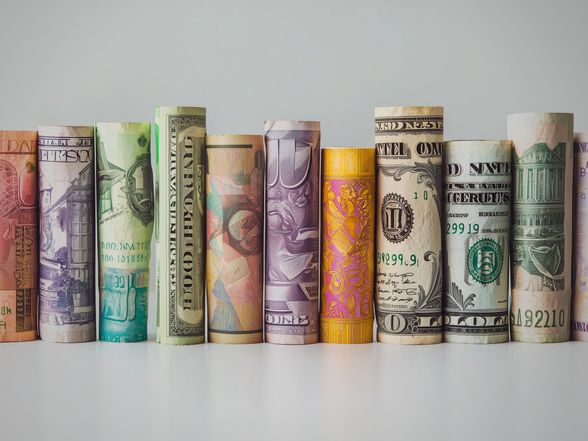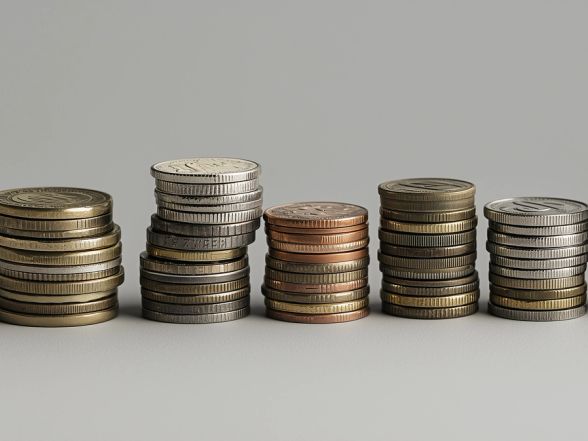
Buy Bulgarian levs
Upgrade your travel money.
Join Travelex Plus for free and get a first trip discount valid for 30 days. Plus, exclusive members- only sales, 0% commission however you buy, and get alerted when our rates are at their best and we even freeze them for you until the next day.

Sign up & save now
Exclusive sales and discounts for members plus our best in-store rates. You'll also get information about our services, travel perks and inspiration straight into your inbox.
Find out moreTo see how we use your information visit our Privacy Centre. Please find our Travelex Plus Terms & Conditions here. This site is protected by reCAPTCHA and Google Privacy Policy and Terms of Service apply.
How to get your Bulgarian levs
Order your Bulgarian levs online to get great rates on BGN. Choose from home delivery or Click & Collect from stores or airports.
Home delivery
Spend more time packing, planning, and working on your tan with home delivery.Benefits
- Fast, secure, convenient
- Next day delivery available for cash
- Free delivery for Travelex Money Card
Store click and collect
Order online and pick up on your way. Over 25 locations in stores and airports across the UK.Benefits
- Lock in your exchange rate1
- Located in major UK airports
Travel money in a jiffy
Get your travel money quickly, easily, and securely.
Buy online
Choose how many Bulgarian lev you would like to order.
Choose delivery or collection
Get your travel money delivered or collect at one of our stores across the UK.
Enjoy your trip!
Relax knowing that all your travel money needs are taken care of.
What our customers say
See why they trust Travelex services.
Why choose Travelex
Smart travellers all around the world choose us for their travel money needs.
- +
Years’ expertise
- +
Countries
- +
Stores
- +
ATMs
Quoted figures relate to Travelex Retail operations across the world. Valid as of 30th April 2025.
Key information about Bulgarian levs
The Bulgarian lev is abbreviated as BGN and symbolized by лв. It has been the official currency of Bulgaria since 1881, with the current version in use since 1999.

Bulgarian lev notes
- 1лв
- 2лв
- 5лв
- 10лв
- 20лв
- 40лв
- 100лв

Bulgarian lev coins
- 1ст
- 2ст
- 5ст
- 10ст
- 20ст
- 50ст

Destinations that accept Bulgarian levs
- Bulgaria
Common questions about Bulgarian levs
Timing the market for the best rates is a tricky business due to daily shifts influenced by economic data, global politics, and trader sentiment. Your personal travel schedule and market-watching comfort will guide your decision. We've got our Bulgarian lev exchange rates page to help you stay informed on Bulgarian lev rates.
The Bulgarian lev is accepted in Bulgaria, where it serves as the official currency. It is not commonly used outside of Bulgaria and is not widely accepted in other countries or regions.
You can purchase your Bulgarian levs from us via credit or debit card. When you purchase Bulgarian levs, either online or at our stores, we ensure no credit card handling fees are applied. However, it's wise to check with your card issuer for any potential charges they might apply.
Yes, you can! We can buy back your unused Bulgarian lev notes at any one of our UK retail stores at the original transaction exchange rate up to a maximum value of £250, for a fee of just £4.99. Learn more about our Buy Back Promise. T&Cs apply.
Need a different currency?
Whether you're visiting neighbouring countries or planning a multi-destination trip, our related currency links make it easy to prepare.
1 Lock in exchange rates means that customers can review and reserve exchange rates at their discretion, by purchasing travel money in advance. Any additional purchases will be subject to the prevailing exchange rate at the time of each new transaction.
Travelex Money Card is issued by PrePay Technologies Limited pursuant to license by Mastercard International.
PrePay Technologies Limited is authorised by the Financial Conduct Authority under the Electronic Money Regulations 2011 (FRN: 900010) for the issuing of electronic money and payment instruments. Mastercard is a registered trademark, and the circles design is a trademark of Mastercard International Incorporated.